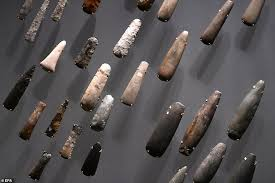An End to Othering
It turns out that we have been as we are now for a very long time. Five thousand years is a blink of an eye. We have been speaking languages for fifty thousand years. We have been farming for eleven thousand years (perhaps only six thousand in Britain). At the time of Stonehenge, around 3,500 BC, people who lived in Britain knew all about each other: the same pottery and patterns are seen from Orkney to the south coast. The bones of the dead, along with special blue stones, were transported from West Wales to Stonehenge. Others buried there come from other parts of Europe such as Switzerland. The big feasts and celebrations enacted at Stonehenge were winter solstice celebrations, full of conspicuous consumption just like our Christmas, if not more so. Thousands gathered to cook joints and eat them together, a sort of cross between a family roast and an FA cup final.

Archaeologists continue in their endearing way to ‘other’ the ordinary. A convenient wooden walkway across the marshes of the Somerset levels is described as a religious journey into a sacred space. Stone drums buried with children are believed to have ritual significance. Nowadays they would be replicas of kids’ toys buried with them to keep them company, by a grieving family. People dressing up in masks are described as priests, as opposed to festival-goers. The celebration of the solstice itself is seen as a sign of being more in touch with the rhythms of nature than we are today. Yet we still want to cheer ourselves up in the dead of winter. Certain leavings do seem more like superstitious offerings, for example objects left in flint mines of 2,900 BC, reflecting the hopes and fears of all of us when we undertake risky ventures.
For me, the British Museum’s beautiful and fascinating Stonehenge exhibition blew away two myths: the first, that human beings are ever ‘locals’. We were nomadic before we were settled and, even when settled, we have remained in touch with and intensely interested in the doings of other humans across wide distances.
The other myth, that people in the past were collectively similar to each other and different from us. Now as then, we pursue our individual trajectories like comets and stars rotating around each other, each a unique blend of the possibilities, differing from each other greatly as individuals but not more greatly for gaps of time and space.
